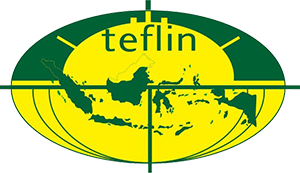Culture and Intercultural Competence Incorporated in the English Textbook for Senior High School
Abstract
Cultural elements in textbooks are essential to support intercultural competence. By providing textbooks with text containing cultural elements and cross-cultural competence, language learners are not only prepared linguistically but also culturally. Since proficiency in English is not enough without intercultural competence, some English textbooks in Indonesia highlight cultural and intercultural competence to support their contents. The writer is interested in analyzing the content of an English textbook issued by the Ministry of Education and Culture of the Republic of Indonesia, entitled “Bahasa Inggris,” which is a revised edition of 2018 grade XII. This research uses a descriptive qualitative method and content analysis technique. Several theories were used to analyze the textbook. First, the writer used Xiao's theory to analyze cultural themes. Second, the writer used Cortazzi and Jin's theory to analyze types of culture. Third, the writer used Byram's theory to analyze intercultural competence in the textbook. The study shows that cultural contents are represented in several cultural themes, namely Big ‘C’ and Little ‘c’ culture, using Xiao’s theory. Then, by using COrtazzi and Jin’s theory, they represent three types of culture, namely source culture/local culture, target culture, and international culture. According to Bryram’s theory, intercultural competence can also be found in pictures, texts, and tasks. This competence includes knowledge, skills, and attitude. The cultural themes displayed in the textbook are dominated by the cultural themes of education. The cultural contents represented in the textbook mostly adopt Indonesian local culture, and the textbook has met the competence categories required by the Ministry of Education and Culture of the Republic of Indonesia, even though it has not met the intercultural competence category conceptualized by Byram because of the absence of critical awareness category on task material in the textbook.
Keywords
References
Aliakbari, M. (2004). The place of culture in the Iranian ELT textbooks in high school level. 9th Pan-Pacific Association Linguistics Conference, 1–14.
Baker, W. (2003). Should culture be an overt component of EFL instruction outside of English-speaking countries? The Thai context. Asian EFL Journal.
Byram, M. (2001). Developing intercultural competence in practice. Clevedon, UK: Multilingual Matters.
Chao, T. C. (2011). The hidden curriculum of cultural content in internationally published ELT textbooks: A closer look at New American Inside Out. Journal of Asia TEFL, 8(2), 189–210.
Cortazzi, M., & Jin, L. (1999). Cultural mirrors: Materials and methods in the EFL classroom. In E. Hinkel (Ed.), Culture in second language teaching and learning (pp. 196–219). Cambridge, UK: Cambridge University Press.
Downe-Wamboldt, B. (1992). Content analysis: Method, applications, and issues. Health Care for Women International, 13(3), 313–321. https://doi.org/10.1080/07399339209516006
Nugrahani, F. (2014). Metode penelitian kualitatif dalam penelitian pendidikan bahasa. Surakarta, Indonesia: Cakra Books.
Fong, C. S., Dewitt, D., & Leng, C. H. (2018). The analysis of cultural and intercultural elements in Mandarin as a foreign language textbooks from selected Malaysian public higher education institutions. Journal of Educational Sciences, 6(1), 66–90. https://doi.org/10.31258/jes.6.1.p.66-90
Graves, K. (2000). Designing language course: A guide for teachers. Boston, MA: Cengage Learning.
Gunantar, D. A. (2017). Textbook analysis: Analyzing English as a foreign language (EFL) textbooks from the perspective of Indonesian culture. Language Circle: Journal of Language and Literature, 11(2), 173–182.
Hall, S. (1997). Representation. London, UK: SAGE Publications.
Hardani, H., & Abadi, H. (Eds.). (2020). Metode penelitian kualitatif dan kuantitatif. Yogyakarta, Indonesia: CV. Pustaka Ilmu Group.
Kementerian Pendidikan dan Kebudayaan (KEMENDIKBUD). (2012). Dokumen Kurikulum 2013. Jakarta, Indonesia: Kementerian Pendidikan dan Kebudayaan.
Kramsch, C. (1993). Context and culture in language teaching. Oxford, UK: Oxford University Press.
Mathur, M. (2017). Meaning and types of culture. In Documentation, preservation, and conservation of culture. IGNOU: The People’s University.
McKay, S. L. (2003). The cultural basis of teaching English as an international language. New York, NY: Routledge.
Mohamed, M. A. S. (2015). The role of English language textbooks in the reproduction of racism. International Journal of English Language and Translation Studies, 3, 95–108.
Nault, D. (2006). Going global: Rethinking culture teaching in ELT contexts. Department of English Language and Culture, 19(3), 37–41.
Marhamah, R., Daud, B., & Samad, I. A. (2017). Integrating target language culture into teaching-learning EFL. English Education Journal, 8(4), 488–502.
Risager, K. (1991). Cultural references in European textbooks: An evaluation of recent tendencies.
Rosyida, E. (2016). Teachers’ perceptions toward the use of English textbook. Jurnal Tadris Bahasa Inggris, 9(1), 43–54.
Seelye, H. (1984). Teaching culture: Strategies for intercultural communication (2nd ed.). Lincolnwood, IL: National Textbook Company.
Shrestha, K. N. (2016). Role of (local) culture in English language teaching. Journal of NELTA, 21(1–2), 54–60.
Suyitno. (2018). Metode penelitian kualitatif: Konsep, prinsip, dan operasionalnya (A. Tanzeh, Ed.). Tulungagung, Indonesia: Akademia Pustaka.
Takari, M. (2018). Secara saintifik, kebudayaan dibahas secara luas dan mendalam (August ed.).
Amirin, T. M. (1995). Menyusun rencana penelitian. Jakarta, Indonesia: Raja Grafindo Persada.
DOI: http://dx.doi.org/10.21043/jetli.v7i2.27571
Refbacks
- There are currently no refbacks.
Copyright (c) 2024 Journal of English Teaching and Learning Issues







